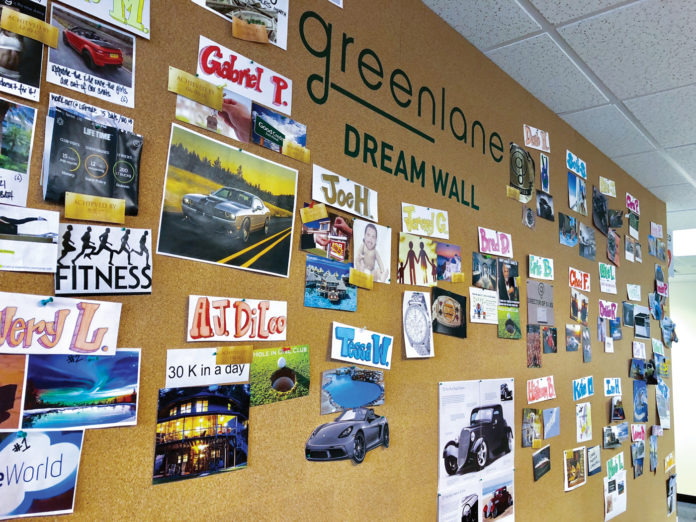According to Simon Sinek, corporate culture guru and author of Start With Why, “Your company doesn’t have a culture. It is culture.” With that in mind, business leaders and human resources professionals should ask themselves a number of questions as they evaluate whether the environment at their company reflects the corporate culture they intend to create. First of all, what is the ideal culture—the way employees interact with each other and customers—at their company? Does the company have the resources to create that experience? Is management devoted to maintaining the environment?

Best foot forward
Sasha Kadey, chief marketing officer for smoking accessories distributor Greenlane, has taken Sinek’s advice to heart. Kadey arrived in the cannabis sector after many years of success in the beverage alcohol and beauty industries. His expertise goes beyond elevating brands and tapping opportunities in the marketplace to building solid corporate cultures. His first step at Greenlane was ensuring management dedicated significant effort and resources to cultivating a unique, vibrant, accepting culture.
“Greenlane is a place where people can be their authentic selves all the time,” Kadey said. “We are proud of the hard work we put in and the results we deliver. Greenlane isn’t a monoculture—we are a strong, creative team that is goal oriented.”
Greenlane has garnered a reputation for friendliness and cooperation. The company employs more than 250 people in offices and distribution centers in Florida, California, Toronto, and New York. Open-plan workspaces at each location contribute to a cohesive culture by encouraging communication and collaboration across all teams and departments. “We are open and transparent,” said Kadey. “We set expectations together and, as a result, our team is more dedicated to their work and progress.”
Building a team
Finding the right employees is first and foremost on Greenlane’s human resources agenda. When recruiting, the company looks for talent, intelligence, and candidates who are the “right fit.” Kadey likes to quote Jim Collins, author of Good to Great: “If you have the right people on the bus, the problem of how to motivate and manage people largely goes away. The right people don’t need to be tightly managed or fired up.”
By adhering to this advice, Greenlane has attracted productive, hard workers who also like to have fun. “You must have fun while you work hard, because that’s the only way to make the volume and quantity of the work we do bearable,” Kadey said. “It’s important for Greenlane’s employees to be a cultural fit for our mosaic melting pot.”
The philosophy also has helped the company retain talent. By creating a corporate culture that identifies, spotlights, and rewards achievements, Greenlane encourages loyalty and best efforts, Kadey said. The company also offers rich compensation and benefits packages tied to the success of the organization. “We continually look for ways to improve that,” said Kadey. “We try to establish career paths and create opportunities for advancement. We do everything the big companies in Silicon Valley do to retain employees, but the most important thing we do is communicate directly with our employees.”
Keep it fresh
Having been part of many different corporate cultures, Kadey said there is no cookie-cutter approach to creating and maintaining employee morale. “Everyone is a unique person with unique motivations and psychologies,” he said. “The best way to get to know your employees is to spend one-on-one time with them to understand their unique set of motivations. Then you can address their individual needs and help develop a career path that caters to their singular needs.”
Kadey finds asking employees about their goals and plans is an effective way to understand their psychology. He has seen too many managers fall victim to viewing everything through their own perception, thinking things that motivate them also will motivate their employees.
Another pitfall, he said, is failing to see the forest for the trees. “You shouldn’t spend time doing all the things you hear Google and Facebook do,” he said. “When you do that, you miss the more important basic things people often take for granted—things like communicating openly with staff, making sure they don’t feel like just a cog in the wheel, that they feel like they are part of the bigger picture and understand how what they do makes a difference to your success.”
Know your value
According to Kadey, the number one thing most employees want to know is how they fit into the bigger corporate picture. “They want and deserve communication and transparency; to know how they fit in and how their contributions matter,” he said. “Nobody wants to feel like they are just along for the ride.”
He advises not taking employees’ reports about company morale at face value. Often, he said, employees will pacify managers or simply give a non-committal response. The best way to gain insight about the mood of your company is through anonymous feedback or trusted confidantes who will tell the truth. “Don’t think just because you go and ask employees for their opinions that they aren’t going to sugarcoat it for you,” Kadey said. “Don’t be walking around naked, literally and figuratively.”








